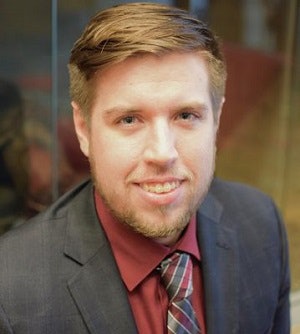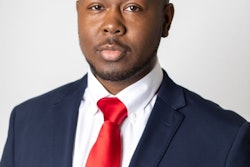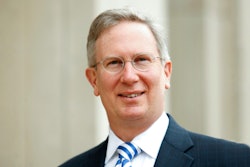When it comes to tenure-track faculty positions, and pursuing tenure altogether, there’s no doubt that one item stands above all others: Research. Even in the field of higher education, a field that is supposed to critically reflect on the issues of the academy, including the shortcomings of tenure processes, our programs still emphasize the same flawed indicators: Research -> Publications -> Authorship. And still, authorship is the great elephant in the room that we often don’t discuss – even when it’s detrimental to so many. In this piece, I have decided to bring attention to a few of the issues with authorship as it presently stands – issues I have witnessed first-hand.
The irony of single-authorship
As someone who is preparing to enter the job market in the coming year, I have had numerous discussions with esteemed faculty members across the country, many of whom have reiterated the importance of publishing – and publishing solo. While single-authorship has seen a decline since the beginning of the century, the proportion of single-authored papers in the field of education as a whole remains well-above average when compared to other disciplines. Yet, we fail to recognize the time that goes into solo-authored papers, especially for graduate students who are new to academic publishing altogether. We fail to recognize that many graduate students do not have their own data until their dissertation, thus they have to provide co-authorship to advisors whose data they use. And even when graduate students collect their own data for their dissertation, some faculty members claim co-authorship on papers that come from the dissertation.
 Tyler Hallmark
Tyler HallmarkBut, perhaps most importantly, we fail to recognize that single-authorship is counter to everything we know and everything we teach – and that co-authorship actually has many benefits. Over the past two decades in particular, an increasing amount of higher education scholarship has emphasized the importance of diversity and collaboration. And, as we utilize our scholarship to inform practice, we regularly discuss the importance of perspective taking and collaborative learning, among other items, for our students. Yet, our discipline (like many other disciplines) continues to base its hiring practices and tenure reviews upon whether individuals can go it alone. It’s time we reflect upon our practices as a field, as collaborating with others may lead to opportunities for more individuals to be involved, engagement with more diverse perspectives, and ultimately, richer research and practice.
The discussions (or lack thereof) in regard to authorship
Although there is much to be gained from writing with others, co-authorship may present its own challenges. In recent years, I’ve heard more and more about the need for scholars to have open discussions about authorship at the start of the process. In fact, organizations, such as APA’s Science Student Council, have even published guides on determining authorship, encouraging graduate students to engage in such conversations. Yet, in practice, many scholars – graduate scholars in particular – never have these conversations until late in the process, when power dynamics so often determine the order. Indeed, as much as we say it’s okay to have these conversations, these conversations may still be particularly intimidating and difficult to start/have for those who are new to the academy.
It could be different though. Instead of publishing guides for graduate students to learn how to inquire about authorship, what if we put the onus on faculty members? Imagine walking into a doctoral program, joining your first research team, and having your faculty advisor open up about what the project is and establish an order for authorship on an upcoming paper. Moreover, imagine if that faculty member also makes it clear that authorship is subject to change if the workload shifts, creating an environment where it’s okay to bring up concerns about authorship. Instead of placing even more pressure on graduate students, it might be best that our faculty model those conversations for them.
The listing (or lack thereof) of authors and contributors
Finally, while it’s important to begin conversation around authorship, it’s also vital for us to hold up a mirror to our own practices. It continues to astound me that some individuals will write acknowledgements to contributors that were a “co-author in all but name” and still not name that individual as a co-author. Furthermore, I’m constantly perplexed by authors who have no trouble exceeding page limits for article submissions, yet still fail to type a 10-word acknowledgement for non-authors who contributed to a project – non-authors who are so often graduate students. Indeed, scrolling through many recent publications in the field of higher education, the only listings in acknowledgement sections of articles are typically those of funding sources – despite knowing full-well that someone likely, at least, reviewed the article before it was submitted for official peer-review.
In the spirit of the upcoming Association for the Study of Higher Education (ASHE) 2020 conference theme, I encourage scholars to reflect upon their own authorship practices for Advancing Full Participation. As declared in the theme, full participation is not simply about access, equity, and representation, but full participation also lends to voice, power, and recognition. It is not enough that we ask for others to read and/or edit our work in order to capture their perspectives. It is also necessary for us to include them in authorship, or if they did not meet standards for authorship, at least show our gratitude for them in our acknowledgements.
Ultimately, there is a need to transform the norms of the field of higher education when it comes to authorship – norms that are so often to the detriment of emerging scholars and historically marginalized populations (such as women and people of color). It is necessary for us to value collaboration in authorships, normalize conversations around authorship order, and give credit where credit is due. And if we do, the field of higher education will be better for future generations.
Tyler Hallmark is currently a Ph.D. candidate at The Ohio State University.


















